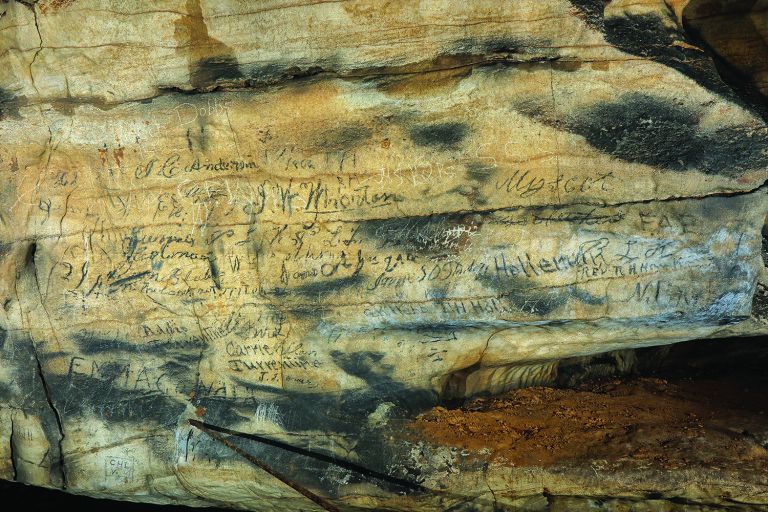
Cherokee inscriptions in Manitou Cave, Alabama, dating back to the 19th century have revealed how tribes viewed the cave as a "spiritually potent" sacred space during the Trail of Tears.
Archeologists and Cherokee scholars worked together to uncover the meaning of two sets of inscriptions which are the first to be found in a cave context. One set was found around 1.5km (0.9 miles) from the limestone cave entrance, in a remote, wet 30m by 15m (98ft by 49ft) cavern where an underground stream meets the main section. The writings document a ceremonial game of stickball, comparable to lacrosse but with great cultural significance.
"The leaders of the stickball team on the 30th day in their month April 1828," the markings read.
Jan Simek, co-author of the study and president emeritus of the University of Tennessee System and Distinguished Professor of Science in UT's Department of Anthropology explained stickball was a "ceremonial event that often continues over days, focusing on competition between two communities who epitomize the spirit and power of the people and their ancestors."
"The game also represents the materialization of the danger, drama and glory of war and death," and could provide spiritual renewal, the authors of the study wrote.
A religious adviser would have aided the teams in the ritual. The authors believe this would have been Richard Guess. He was the son of Cherokee scholar Sequoyah, who invented the Cherokee syllabary which became the tribe's official writing system in 1825.
The fact the engravings appear so deep inside the cave is thought to reflect the tensions between Cherokees who wanted to accommodate European settlers, and those who opposed to the idea and who preferred to live traditionally.
The second set of engravings sit approximately 300m from the cave entrance. Etched 10m to 15m into the ceiling, they read: "We who are those that have blood come out of their nose and mouth." It is likely the sentence describes the injuries suffered during the stickball match.
"The ceiling inscriptions are written backward, as if addressing readers inside the rock itself," explained Simek.
"This corresponds with part of one inscription which reads 'I am your grandson.' This is how the Cherokee might formally address the Old Ones, which can include deceased Cherokee ancestors as well as comprise other supernatural beings who inhabited the world before the Cherokee came into existence."
The message is signed The Goose, whom the authors think could have also been a spiritual leader. How he reached so high in the cave, however, is unknown. "Perhaps The Goose could fly," the study authors wrote.
The paper entitled Talking Stones: Cherokee Syllabary in Manitou Cave, Alabama was published in the journal Antiquity. This is the first time the way indigenous people used the cave has been studied, as tourist activity in the cave has removed evidence usually used by researchers.
The Cherokee populated an area spanning the Appalachian Mountains in what is modern-day Georgia, South Carolina, North Carolina and Tennessee. In 1830 they were among indigenous peoples targeted by President Andrew Jackson's Indian Removal Act, which mandated ethnic cleansing of Native People from east of the Mississippi River. This westward displacement of indigenous peoples is known as the Trail of Tears.
"Our research has shown that the Cherokee voice in Alabama did, in fact, outlast the Trail of Tears," Simek said.
"The Cherokee syllabary inscriptions in Manitou Cave reflect the use of this great cavern as a place for seclusion, reflection and ceremony during perhaps the most stressful time in Cherokee history, when the people were forcibly and finally removed forever from their beloved homelands," the authors wrote.
Next, the researchers will investigate other inscriptions uncovered during the course of their work.
"We will continue to document and protect these previously unknown records of indigenous American history and culture," said Simek.
Uncommon Knowledge
Newsweek is committed to challenging conventional wisdom and finding connections in the search for common ground.
Newsweek is committed to challenging conventional wisdom and finding connections in the search for common ground.
About the writer
Kashmira Gander is Deputy Science Editor at Newsweek. Her interests include health, gender, LGBTQIA+ issues, human rights, subcultures, music, and lifestyle. Her ... Read more
To read how Newsweek uses AI as a newsroom tool, Click here.








